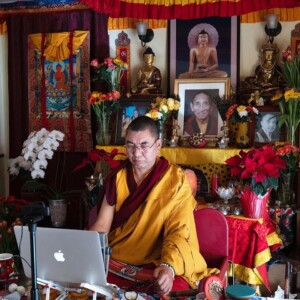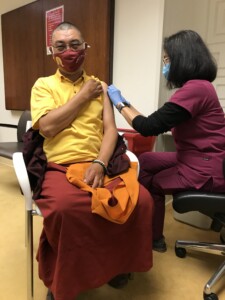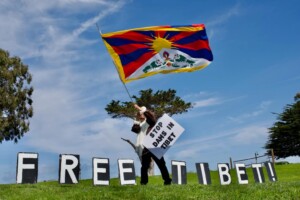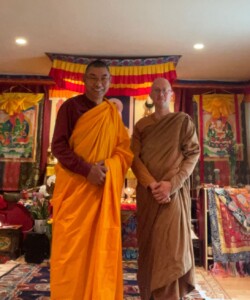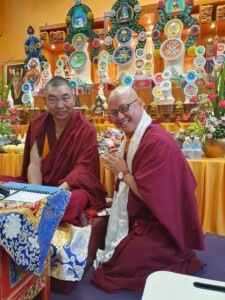The Manjushri Dharma Center sangha* is a warm and welcoming community dedicated to developing more peaceful minds and a more peaceful world. We meet regularly on Monday nights for chanted prayers and Saturday mornings for meditation under the guidance of Venerable Khenpo Karten Rinpoche. In addition to special holy days in the Tibetan Karma Kagyu tradition, there are many added teachings, retreats, and gatherings sprinkled into the schedule (or “sched” in Rinpoche-speak). Sangha members gather in-person and join via Zoom from across the U.S. (Portland, Boston, New York, New Jersey), and from Malaysia, Singapore, Taiwan, Nepal and India. Rinpoche is a precious teacher and a sincere practitioner who offers practical advice for daily life.
Please join the MDC Newsletter List!
Each Monday, receive brief “Dharma Bites” from Rinpoche & the weekly “sched” (which is subject to frequent change)
New community member? Reach out to the MDC volunteers via email at manjushridharmacenter831@gmail.com!
A Brief History of Manjushri Dharma Center
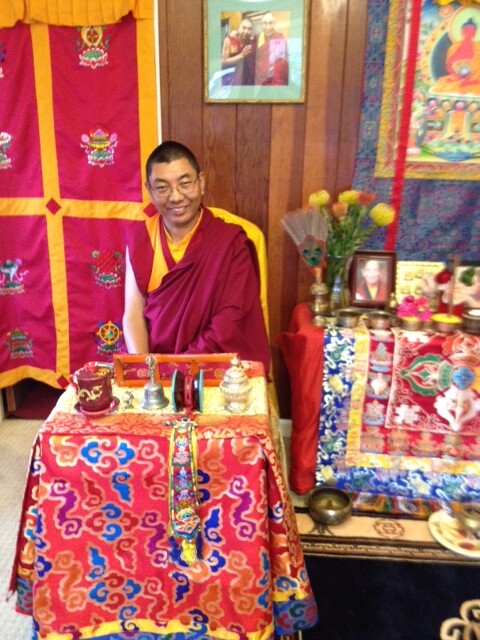
April 2014: Rinpoche in his first dedicated Dharma center on 623 Lighthouse Avenue in Pacific Grove, CA–the “Little Yellow House.” Prior to that he had taught at Pacific Coast Church in Pacific Grove and in private homes in Carmel, CA.
The Teacher will arrive when the student is ready.
“Khenpo Karten Rinpoche and I met at a chance encounter in 2008, at a teaching by His Holiness the Dalai Lama in Madison, Wisconsin, ” writes Heidi Feldman in Life in Pacific Grove California: Personal Stories by Residents and Visitors to Butterfly Town U.S.A. (Pacific Grove Books)** Much of the content of this page is taken from that book, and from a chapter that Heidi wrote called “Khenpo Karten Rinpoche: A Resident Buddhist Teacher for Pacific Grove.”
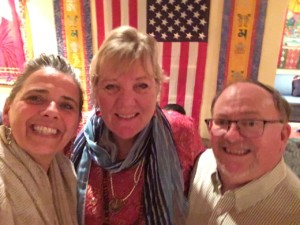
Stephanie, Heidi, Kyle, the three original MDC board members. They served Rinpoche for more than a decade and established MDC. Shown here at Rinpoche’s U.S. Citizenship party in 2017.
Rinpoche, a Buddhist monk and teacher of the Karma Kagyu Lineage, had been in the U.S. about a year, after having been in Dharamshala, India almost ten years. He survived a long and harrowing journey from his homeland in Tibet to reach India. (soon we hope Rinpoche will publish his life story–his “child story” as he calls it). He had been an Abbott of a monastery near where he grew up in Nangchen, Tibet, located in Yushu Tibetan Autonomous Prefecture in the Qinghai Part of Kham. The Chinese, who invaded Tibet in 1959 and make life very difficult for Tibetans up to this day, imprisoned Rinpoche and it became too dangerous for him to stay any longer. He made a difficult and dangerous trek across the Himalayan mountains to India in 1998, a journey that nearly cost him his life.
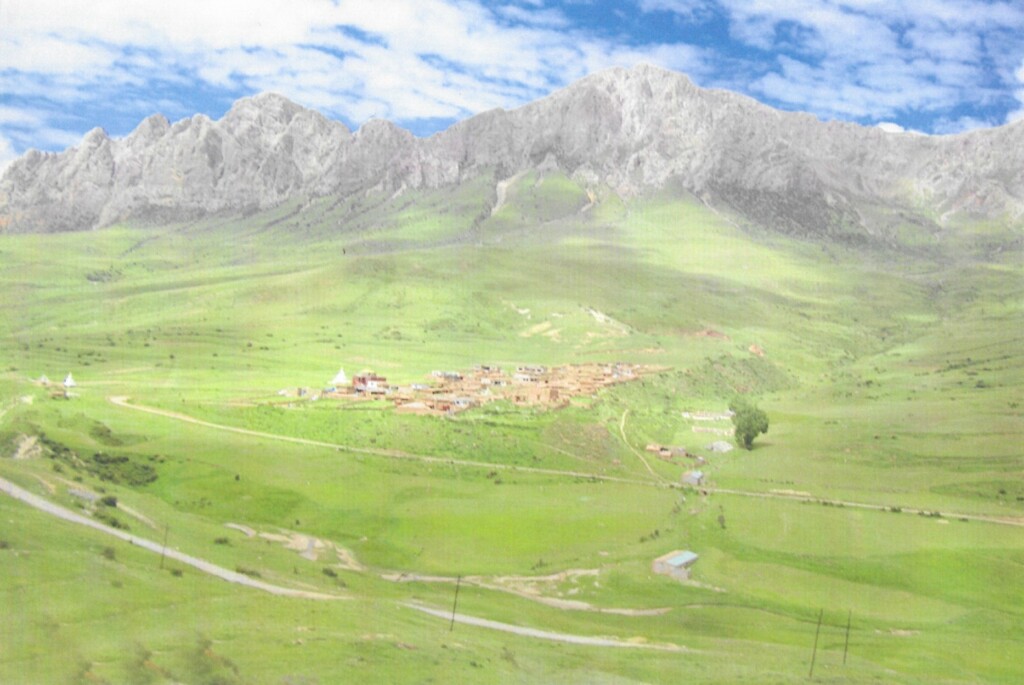 Rinpoche’s hometown, the village of Piza in Nangchen, Tibet. About 1000 families. The area is famous for its rich soil, and farmers export the soil & sod as a commodity. Today, the multi-generational farmers are being forced off the land so the Chinese can build barracks for soldiers and hotels.
Rinpoche’s hometown, the village of Piza in Nangchen, Tibet. About 1000 families. The area is famous for its rich soil, and farmers export the soil & sod as a commodity. Today, the multi-generational farmers are being forced off the land so the Chinese can build barracks for soldiers and hotels.
History of Nangchen: Nangchen is one of the most remote and beautiful parts of Tibet and has some of the most authentically preserved Tibetan culture. Nangchen was one of the 5 independent kingdoms of eastern Tibet and is renowned for having some of the fiercest warriors in Tibet. However, the native Kham people were not just only fighters, this county alone holds 155 monasteries, a huge number of monasteries for such a thinly populated area spread over snowy mountains and grandiose rock spires. These kingdoms were independent from both China and the Tibetan government in Lhasa and were each ruled by a Kham king. The former Nangchen kingdom expanded over all of modern day Yushu Tibetan Autonomous prefecture in southern Qinghai. The king of Nangchen ruled this region until the late 1950’s/early 1960’s. (source–note that siting this source is not an endorsement of the tour company)
After a chance meeting again in Berkeley, CA, Heidi soon arranged for Rinpoche to come give teachings in Pacific Grove and Carmel. Rinpoche decided that he liked the Monterey area better than any other place he had visited in the United States.
I really liked the ocean, the nature, the quiet, and Big Sur, he recounts.
Parts of the landscape reminded him of his beloved Tibet, especially the green hills during springtime. When some of his students offered to help him settle in this area, he readily accepted. Several students provided him places to stay, and he gave regular weekly teachings around the Monterey Bay.
His first dedicated teaching location was a very small commercial place in the center of Pacific Grove; one side of a Victorian duplex he shared with a real estate office. The tiny room, which at most could accommodate exactly 21 people (? if they were all standing sideways?) was cozy and allowed him to meet many local P.G. folks as well as tourists staying in nearby hotels. Soon, everyone knew the friendly monk in his maroon robes in the little yellow house, sitting on his small porch or working in the side garden with the colorful prayer flags.
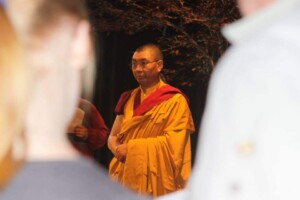
July 2013–Celebrating His Holiness the Dalai Lama’s birthday and Rinpoche’s passport
The “Before” Photos of the newly purchased 724 Forest Avenue property
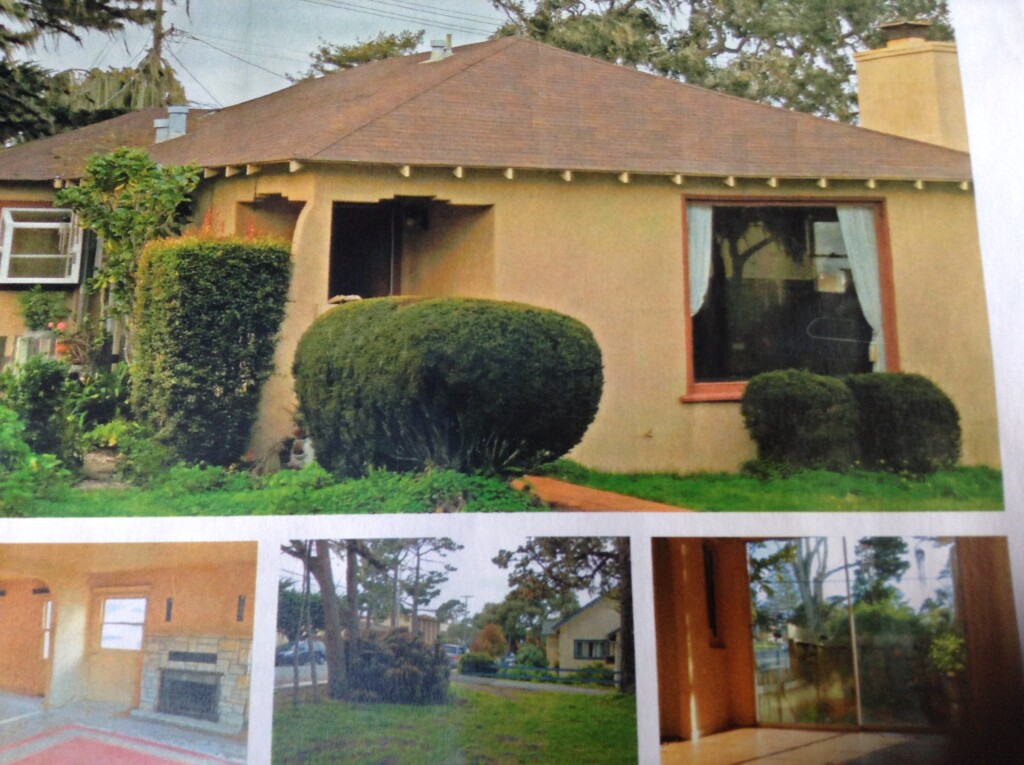
And “After”
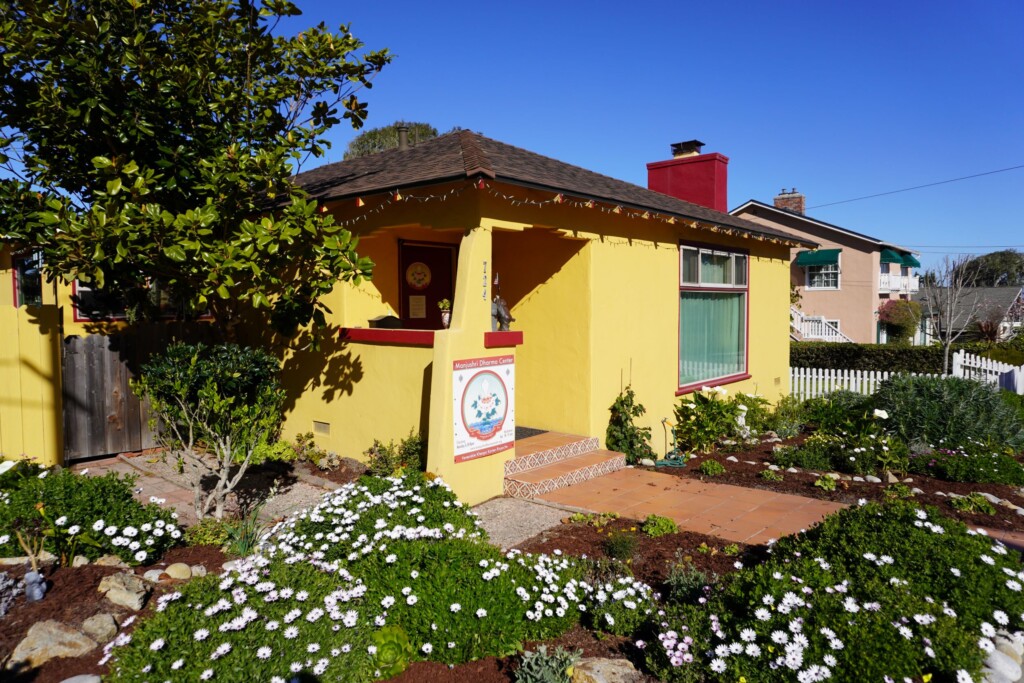
With the help of his students, Rinpoche was able to set up the “Manjushri Dharma Center” as a religious non-profit 501-C3 organization and to attain refugee status, an important milestone on his way to becoming a U.S. Citizen. In 2015, a generous donor decided that Rinpoche needed to stop couch surfing, and gave funds sufficient to purchase a home that could serve both as a community Buddhist center and his home. (Wow!) This would be his first dedicated home since he fled Tibet in 1998. That spring, a very happy Rinpoche gathered with students and friends to begin the work needed to renovate. After a few busy weeks of group volunteer effort, the Manjushri Dharma Center at 724 Forest Avenue in Pacific Grove, California, USA became a highly visible center for an active Buddhist community on the Monterey Bay Peninsula, offering weekly meditation and chanted prayers, as well as in-depth teachings and individual counseling by Khenpo Karten Rinpoche. As it it were not wildly good luck enough to have Rinpoche settled on the Peninsula, our wild good luck cup overfloweth–there is also a skilled and very well studied translator and interpreter of Tibetan that calls Big Sur and the Monterey Bay area home–David Molk (Jampa Tharchin). Buddhist concepts are hard enough to convey between two people of the same language, and without David’s skilled interpretation (spoken word) and translation (written word), westerners could not benefit as greatly as we have from Khenpo La.
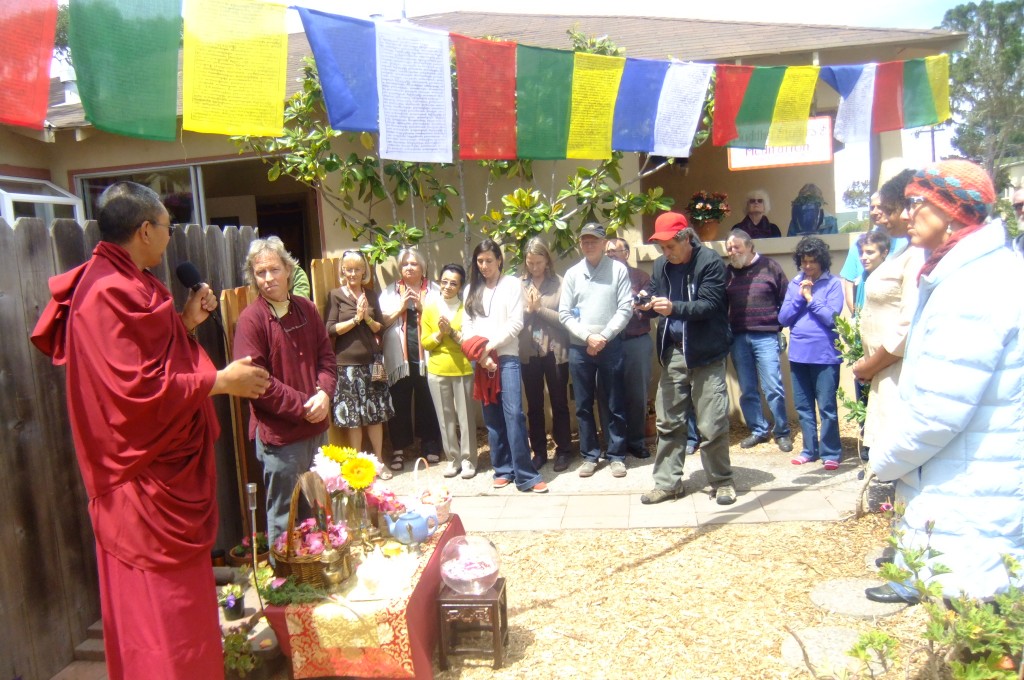
March of 2016, Khenpo Karten Rinpoche and David Molk leading a house blessing on the one year anniversary of the Manjushri Dharma Center.
“It had been many years since Pacific Grove had its own resident Buddhist teacher,” Heidi recalls.
What began as a wish by a student and dream of freedom by her teacher had become a reality for the benefit of all. But Rinpoche’s journey of freedom was not yet complete, the next significant milestone, full U.S. Citizenship, lay ahead.
2017 Rinpoche becomes a U.S. Citizen
With the help of his students, with much dedication to learn English and to study American history, Rinpoche became a fully naturalized U. S. Citizen in the fall of 2017. This had been his dream: to live in a country with religious freedom, with freedom of speech, where he could pursue the teaching and practice of Dharma.
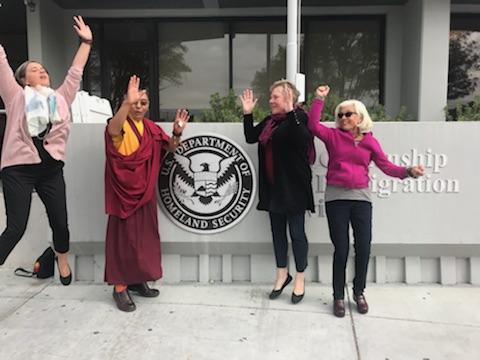
Rinpoche passes his Citizenship test, October 2017
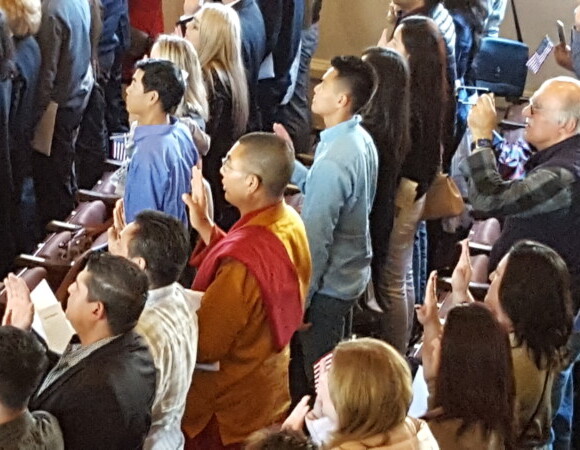
Taking the oath of citizenship, November 2017
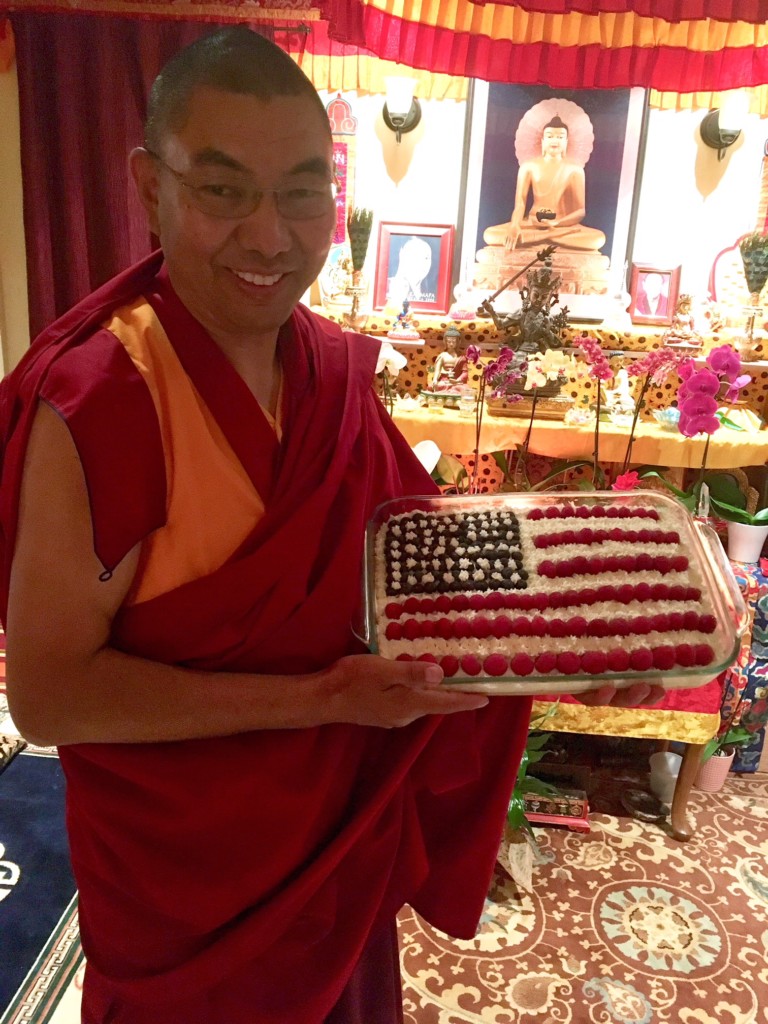
U.S. Citizenship Party December 2017
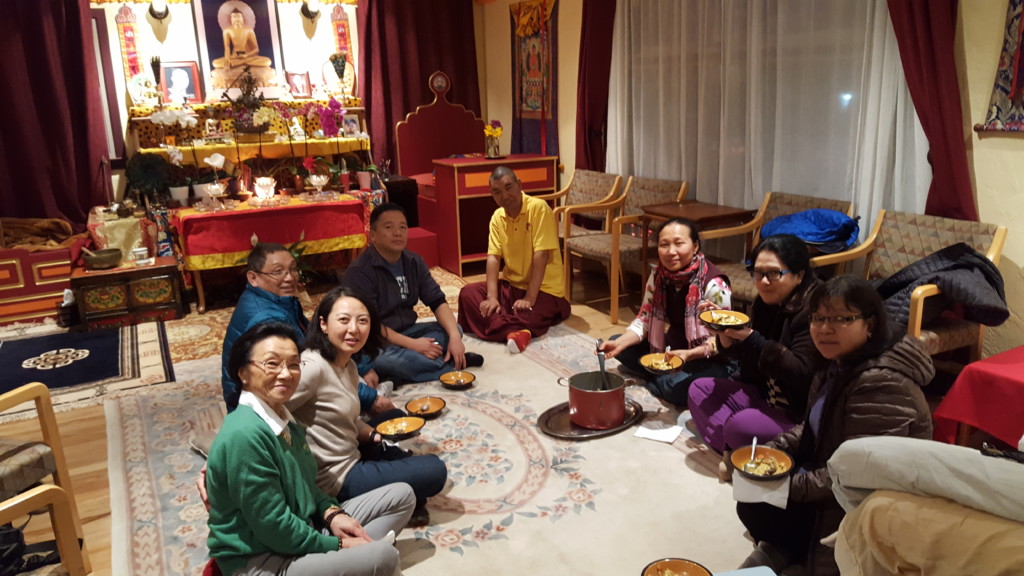
Friday night Soup party! Portland Sangha joins Rinpoche to celebrate his U.S. Citizenship

Making momos ahead of Citizenship party
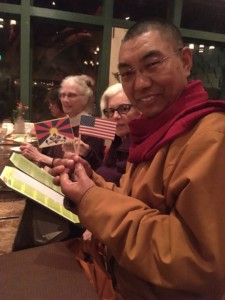
Tibetan-American. Celebration after oath ceremony.
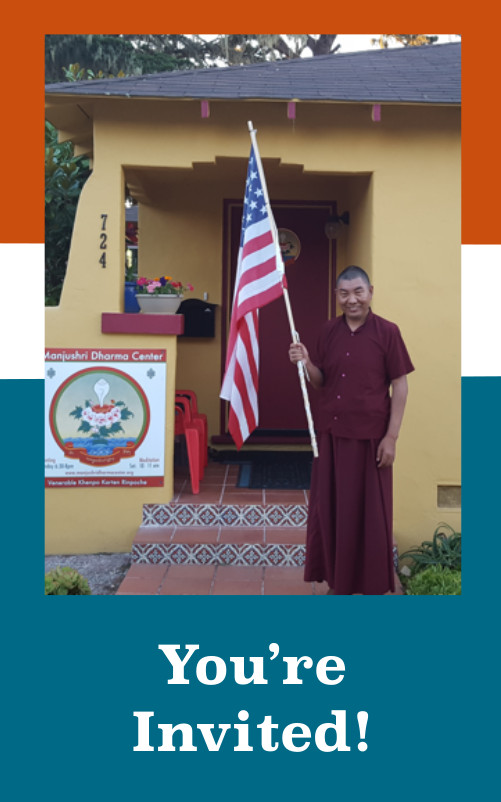
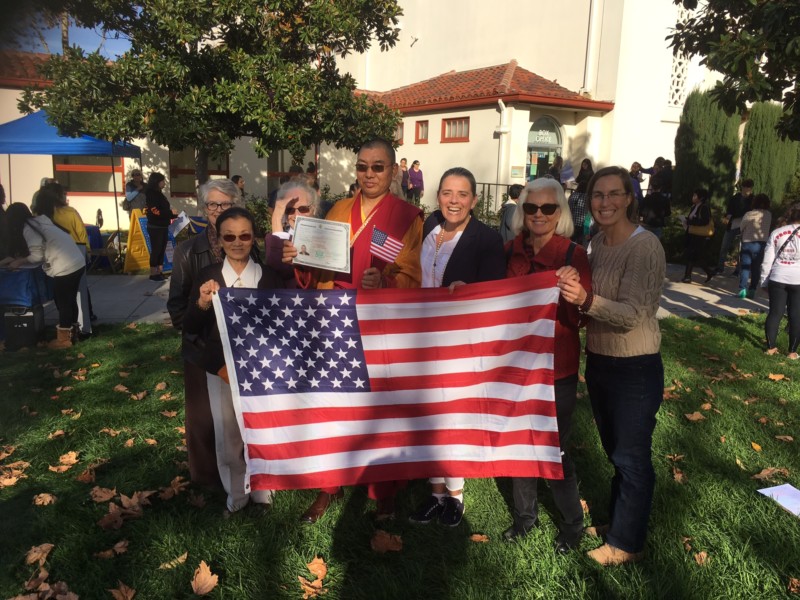
Happy people!
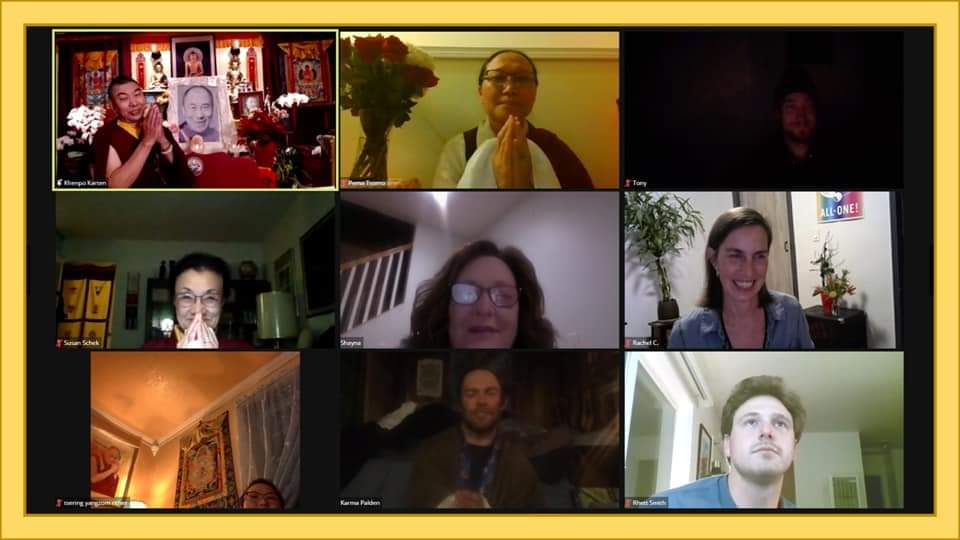
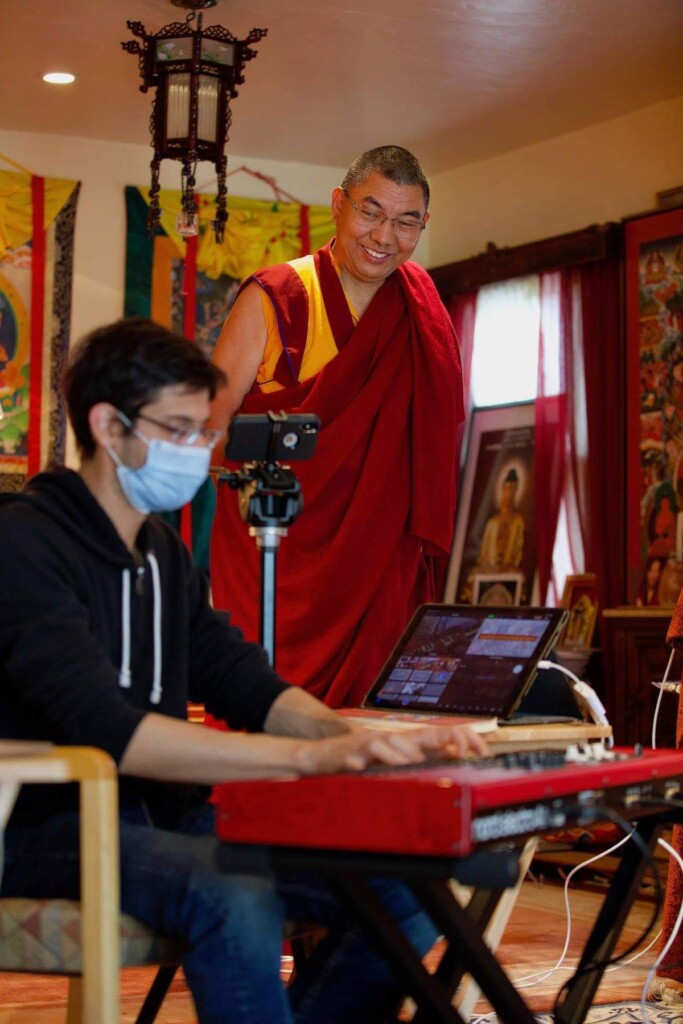
The Golden Lining of the Pandemic
With the changes imposed on all of society during the pandemic of 2020, the Manjushri Dharma Center and Khenpo Karten Rinpoche adapted to online services. We give a deep bow of gratitude to Zoom, a company that transformed our regional Monterey Bay practices into a true global sangha. As Tsering (2024 Board Member) said at the completion of a course of study on the 28 Verses of Gampopa, the connection made possible by this technology (“technolg” in Rinpoche-speak) was not just a silver lining of the pandemic, it was a Golden Lining.
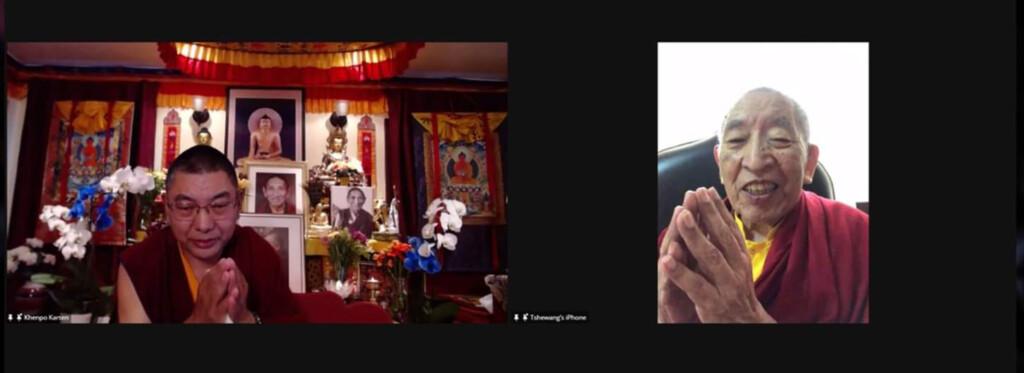
Ven. Kyabje Kenchen Thrangu Rinpoche zooming in from Nepal on the occasion of the 20th Anniversary of the Parinirvana (passing away) of Kyabje Sangye Tenzin Rinpoche, who was Khenpo Karten’s root guru. Read more about Khenpo Karten Rinpoche and his root guru here. See more photos from that very special occasion.
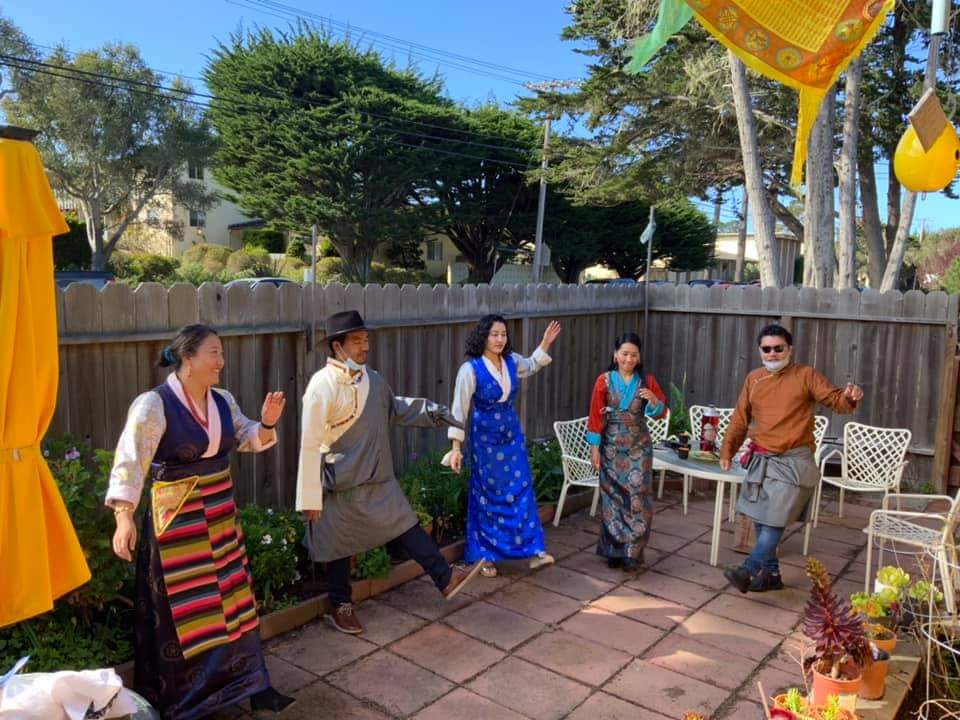
Losar 2021 (Tibetan New Year)
Manjushri Dharma Center Today
Although the pandemic is largely behind us, the “golden lining” continues to benefit the global sangha and compliment the vibrancy of in-person attendance. All Monday night and Saturday sessions are held both in-person and on Zoom. Rinpoche has been able to use Zoom to teach monks and lamas from many monasteries around the world, and the heart connection between our community of sincere practitioners of peace and Buddha Dharma continues to grow.

Long time students and new students; former and current board members; Bodhisattvas in training.
May all beings be well and happy. May all beings be safe and free. May all beings know love and peace.
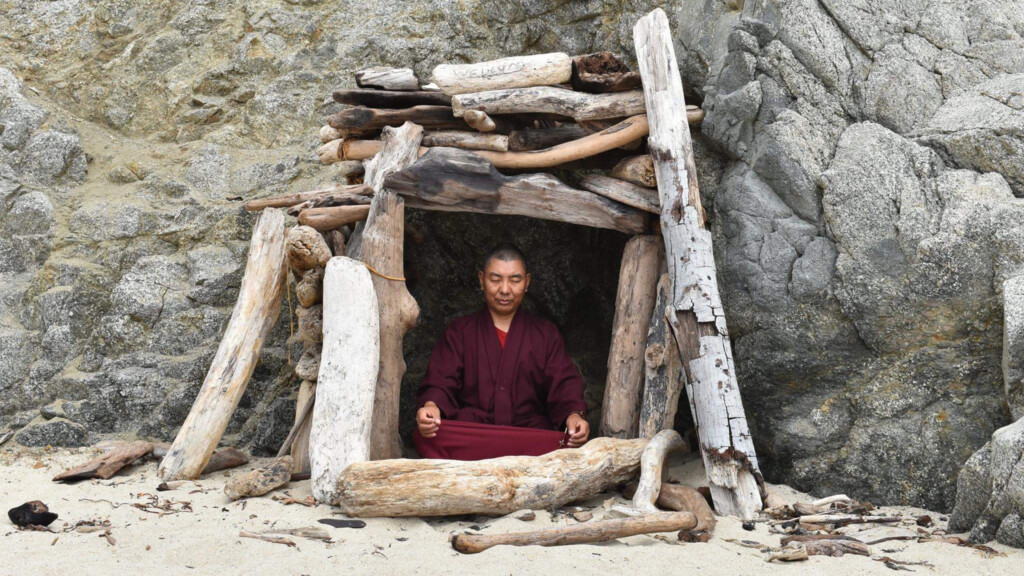
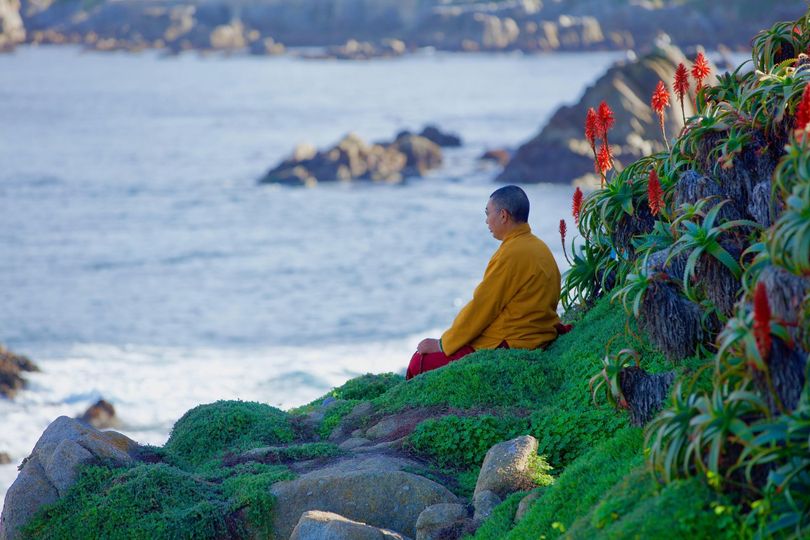
Notes:
*Sangha is a word that originally referred to the group of monks and nuns that followed the historic Buddha Shakyamuni, but has become expanded to mean any group of sincere practitioners of Buddhism. The Buddha, the Dharma, and the Sangha are known as the “Three Jewels”–the main supports for spiritual practice.
**The history of the Manjushri Dharma Center on this webpage is excerpted and adapted from: Life in Pacific Grove California: Personal Stories by Residents and Visitors to Butterfly Town U.S.A. (Pacific Grove Books) Paperback – September 12, 2017 by Patricia Hamilton (Author), Joyce Krieg (Editor), Keith Larson (Illustrator), Phyllis Edwards (Introduction), Bill Monning (Foreword), Pacific Grove Residents and Visitors (Contributors). Specifically the chapter written by Heidi Feldman entitled, “Khenpo Karten Rinpoche: A Resident Buddhist Monk for Pacific Grove.”

